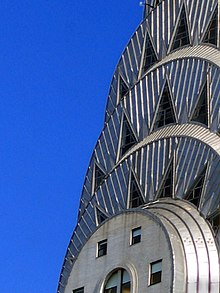I-solid

I-Solid sesinye sezimo ezine ezixhaphakileyo sendlela ezimi ngayo izinto. Iimolecules kwi-isolids zisondelelene ngokungathi ziminxene, inye kuphela intshukumo ezinokuyenza, kukungcangcazela. Oku kuthetha okokuba ii-solids zinohlobo ezimile ngalo, hlobo olo lunokutshintsha kuhela xa kuthe kwakhoamandla athe asetyenziswa ukuzityhla okanye ukuzitsala. Akunjalo ke kwizinto ezingamanzi nakwizinto ezingumoya zona kaloku zisoloko zibhadula nje ziyabula nanini na zikhululekile, okokuyabula kwazo ke kuthiwa yi-flow.
Xa i-solid isibangamanzi, kuthiwa iyanyibilika. Izinto ezingamanzi zibayi-solid ziqothole zibengumkhenkce. Ezinye ii-solid ezifana nomkhenkce owomileyo, ziyakwazi ukutshintsha zibengumoya zingakhange ziqale zibenganzi kuqala. Olo tshintsho ke kuthiwa yi-sublimation.
Iindidi ze-solid
[tshintsha | Yenza izilungiso kokubhaliweyo]Amandla aphakathi kwee-atoms akw-isolid angabonakala ngeendlela ngeendlela. Umzekelo, i-crystal yesodium chloride (ityuwa eyaziwayoityuwa yesiqhelo) yenziwe ngeion sodium ne-chlorine, ezidityaniswe ngee-bond zeion. Kwidayimani okanye i-silicon, ii-atom zabelana ngeeelectron zize zenze iicovalent bonds. Kwiimetal, ii-electrons zikwi-metallic bonding. ezinye ii-solids, njengee organic compounds ezininzi, zidityaniswe ng"amandla evan der Waals" avela kwipolarization yelifu lentlawulo yombane kwimolekyuli nganye. Ukungafani phakathi kweentlobo eziqinileyo zivela kumahluko phakathi kokudibanisa kwabo.
Iintsimbi
[tshintsha | Yenza izilungiso kokubhaliweyo]
Iintsimbi ezininzi zomelele, zixinene, kwaye zikwazi ukuhambisa umbane kunye nobushushu. and heat. The mass of the elements in the periodic table, ezo zingasekhohlo komgca wediagonal ozotyiweyo ukusuka kwiboron ukuya kwipolonium, zizinyithi. Imixube yezinto ezimbini okanye ngaphezulu apho icandelo elikhulu yintsimbi zaziwa ngokuba ziialloys.
Abantu bebesebenzisa isinyithi ngeenjongo ezininzi ukusukela kumaxesha angaphambili. Amandla kunye nokuthembeka kwesinyithi kukhokelele ekusetyenzisweni kwazo ngokubanzi ekwenzeni izakhiwo kunye nezinye izinto, nakwizithuthi ezininzi, izixhobo ezininzi, imibhobho, iimpawu zendlela kunye nomzila kaloliwe. kunye imizila kaloliwe. Intsimbi kunye ne-aluminiyam are the two most commonly used metals. Zikwazezona zinyithi zixhaphakileyo kuqweqwe loMhlaba. Intsimbi isetyenziswa kakhulu ngendlela yealloyi, intsimbi, ene-2.1% yekhabhoni,
Ekubeni iintsimbi ziziqhubi ezilungileyo zombane, they are valuable in electrical tools and for carrying an electric current over long distances with little energy loss. Because of this, electrical power grids rely on metal cables to get electricity. Home electrical systems, for example, are wired with copper for its good conducting uses. The high thermal conductivity of most metals also makes them useful for stovetop cooking utensils.
Minerals
[tshintsha | Yenza izilungiso kokubhaliweyo]
Iiminerali zizinto eziqinileyo zendalo ezenziwe ngeendlela ezininzi ze-geological phantsi koxinzelelo oluphezulu. Ukucingelwa njengeminerali yokwenyani, into kufuneka ibe nesakhiwo sekristale esinezinto ezibonakalayo ezifanayo kulo lonke. Amaminerali ahluke ngokubunjwa kwezinto ezicocekileyo kunye neetyuwa ezilula ukuya kwi-silicates ngamawaka eefom ezaziwayo. okuchasene, isampuli yelitye yinto engaqhelekanga yi-aggregate yeminerali kunye/okanye kwaye ayinayo imichiza ethile Uninzi lwamatye Earth's crust ane-quartz (crystalline SiO2), i-feldspar, i-mica, i-chlorite, i-kaolin, i-calcite, i-epidote, i-olivine, i-augite, i-hornblende, i-magnetite, i-hematite, i-limonite kunye nezinye iiminerali ezimbalwa. Ezinye iiminerali, ezifana nequartz, mica okanye feldspar zixhaphakile, ngelixa ezinye zifunyenwe kwiindawo ezimbalwa kuphela emhlabeni. Elona qela likhulu leeminerali ngokude liyisilicates (uninzi lwamatye lu ≥95% silicates), owona nge-silicon kunye ne-oxygen, ikwanealuminiyam, i-magnesium, intsimbi, ikhalsiyam nezinye iintsimbi.
Related pages
[tshintsha | Yenza izilungiso kokubhaliweyo]Other websites
[tshintsha | Yenza izilungiso kokubhaliweyo]- "Phases of Matter" NASA archived from the original on 2009-10-30 retrieved 2011-05-04
